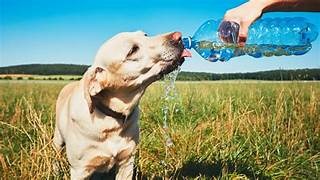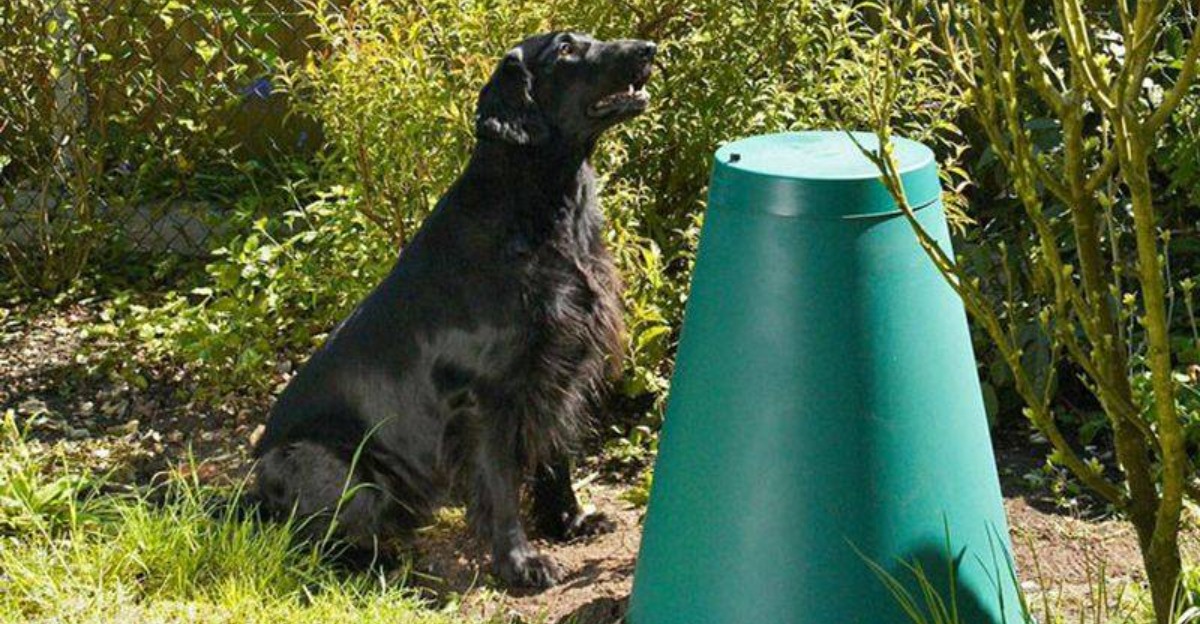
How Climate Change Is Affecting Pet Allergies.
Climate change is silently affecting pets by increasing allergens, extending pollen seasons, and worsening air quality, leading to more frequent and severe allergic reactions. Rising temperatures, urban pollution, and expanding parasite populations are contributing to skin, respiratory, and food allergies in dogs, cats, and other companion animals, highlighting the urgent need for climate-aware pet care and preventive strategies.
🐶 Pet Star
54 min read · 11, Oct 2025

Introduction
Climate change is often discussed in terms of melting glaciers, rising sea levels, and extreme weather patterns. Yet, one of its more subtle and lesser-known effects lies closer to home — in our pets. Just as humans are experiencing heightened allergy symptoms due to global warming and environmental shifts, pets too are becoming victims of the same changes. Dogs, cats, and other companion animals are showing increasing incidences of skin allergies, respiratory sensitivities, and food intolerances that are directly or indirectly linked to the planet’s changing climate.
This detailed article explores how climate change is affecting pet allergies, the science behind this connection, and what pet owners can do to mitigate these challenges.
1. The Link Between Climate Change and Allergies
Allergies, whether in humans or animals, are exaggerated immune responses to substances that are usually harmless — such as pollen, dust, or certain proteins. Climate change plays a significant role in amplifying these triggers through various environmental alterations:
1.1. Rising Temperatures and Longer Allergy Seasons
Global warming has led to longer growing seasons for plants, resulting in extended periods of pollen release. For instance, studies have shown that pollen seasons are now up to 20 days longer in certain regions compared to 30 years ago.
Pets that spend time outdoors are increasingly exposed to higher concentrations of pollen, mold spores, and grass allergens. The result? More frequent episodes of itching, sneezing, watery eyes, and inflamed skin.
1.2. Increased CO₂ Levels Boosting Allergen Production
Carbon dioxide (CO₂) — a key greenhouse gas — acts like fertilizer for plants. Higher CO₂ levels lead to faster plant growth and, more importantly, greater pollen production. Ragweed, for example, produces double the amount of pollen in high CO₂ environments.
This means that even city-dwelling pets are not spared, as urban greenery and weeds thrive in such conditions, making allergic triggers nearly unavoidable.
1.3. Urban Heat Islands and Pollution
Cities experience what is known as the “urban heat island” effect, where concrete and asphalt trap heat, keeping temperatures higher than surrounding rural areas. Combined with vehicle emissions, industrial pollution, and smog, these urban zones become hotspots for allergens and irritants.
Pollutants such as nitrogen dioxide (NO₂) and ozone (O₃) interact with pollen and mold, making them more allergenic. Pets exposed to these altered particles inhale more harmful substances, worsening their respiratory and skin conditions.
2. Common Allergy Symptoms in Pets Linked to Climate Change
2.1. Environmental Allergies (Atopy)
Dogs and cats may develop atopic dermatitis, a chronic inflammatory skin disease caused by environmental allergens. Prolonged exposure to pollen, mold, or dust mites — all of which are on the rise due to climate changes — can cause:
- Persistent scratching, biting, and licking
- Red or inflamed skin
- Hair loss or bald patches
- Ear infections
Veterinarians have noted that certain breeds like Bulldogs, Terriers, Retrievers, and Siamese cats are more prone to environmental allergies.
2.2. Food Allergies and Climate-Induced Immune Sensitization
Changes in food supply chains due to climate disruption can alter the quality or type of pet food ingredients. Heat and humidity promote the growth of fungi and bacteria in stored grains, which can trigger immune hypersensitivity in pets.
Moreover, a stressed immune system — often caused by environmental toxins or heat — becomes overactive, misidentifying food proteins as threats, leading to vomiting, diarrhea, and itching.
2.3. Respiratory Allergies and Air Quality Decline
As wildfires become more frequent and air pollution worsens, pets are inhaling more particulate matter (PM2.5). This fine dust penetrates deep into the lungs, causing:
- Chronic coughing
- Wheezing
- Shortness of breath
- Nasal discharge
Cats, in particular, are vulnerable due to their sensitive respiratory systems. Episodes of feline asthma have been directly correlated with air quality index spikes in several studies.
3. Climate-Driven Allergens on the Rise
3.1. Pollen Proliferation
Global warming accelerates the flowering of allergenic plants like ragweed, birch, and oak. Even in areas that previously had mild pollen seasons, warmer winters now allow plants to bloom earlier and longer, increasing pet exposure.
3.2. Mold and Fungal Growth
Heavy rainfall and humidity — both consequences of a warming climate — create ideal conditions for mold spores to thrive. Mold not only grows outdoors but also indoors, especially in damp corners or near pet bedding. Pets breathing in these spores can suffer from chronic allergic rhinitis and skin irritations.
3.3. Fleas, Ticks, and Mites Expansion
Warmer temperatures support year-round survival of parasites that were once seasonal. Fleas and ticks, in particular, are living longer and spreading to new geographical zones. Their bites introduce saliva allergens into pets’ skin, causing severe allergic dermatitis and secondary infections.
4. Scientific Evidence Supporting the Trend
Veterinary researchers have found a consistent upward trend in allergic conditions among pets over the past two decades. According to a 2023 study published in Veterinary Dermatology Journal:
- Canine atopic dermatitis cases have risen by 35% globally since 2000.
- Cats in urban environments show twice the prevalence of respiratory allergies compared to rural cats.
Moreover, climatologists link these findings to temperature increases and pollen data trends from the same periods.
Another 2022 study from the University of Helsinki reported that dogs living in high-traffic urban zones had significantly elevated levels of IgE antibodies — a biological marker for allergic reactions — due to chronic exposure to airborne pollutants.
5. How Pet Owners Can Help Protect Their Pets
While climate change is a global challenge, individual pet owners can take practical steps to reduce their pets’ allergy exposure and discomfort:
5.1. Maintain a Clean Indoor Environment
- Use HEPA filters in air purifiers to capture fine allergens.
- Vacuum regularly using allergy-safe filters.
- Wash pet bedding weekly with hypoallergenic detergents.
- Keep windows closed during high pollen or dust periods.
5.2. Limit Outdoor Exposure During Allergy Seasons
Check local pollen forecasts and avoid long outdoor walks during peak pollen hours (early morning and dusk). After outdoor play, wipe your pet’s paws and coat with a damp cloth to remove surface allergens.
5.3. Improve Nutrition and Hydration
A balanced diet rich in omega-3 fatty acids supports skin health and reduces inflammation. Ensure your pet has access to clean water at all times to help their body flush out toxins.
5.4. Veterinary Allergy Testing and Immunotherapy
Modern veterinary clinics offer allergy testing panels that identify specific triggers. Based on results, your vet may recommend:
- Antihistamines or corticosteroids
- Hypoallergenic diets
- Allergy shots (immunotherapy) to desensitize your pet’s immune response
5.5. Climate Control Indoors
Using humidifiers in dry seasons and dehumidifiers in humid weather can maintain optimal indoor air conditions for sensitive pets.
6. The Future Outlook: A Growing Veterinary Challenge
As the planet continues to warm, veterinarians anticipate that pet allergies will become a major public health and animal welfare concern. Beyond individual suffering, allergic pets often require lifelong treatment, adding financial and emotional burdens for owners.
Veterinary professionals and researchers are now calling for climate-conscious pet care policies, including:
- Monitoring allergen data alongside weather forecasts
- Developing climate-resilient pet food formulations
- Raising awareness about preventive pet healthcare in changing climates
Climate change, therefore, is not only an environmental crisis but also a biological and veterinary challenge — one that demands both global and household-level attention.
Climate change is one of the most pressing global challenges of our time, affecting ecosystems, weather patterns, and human health, but its impact extends far beyond humans to our beloved pets, particularly in the realm of allergies, which are on the rise among dogs, cats, and other companion animals due to multiple interconnected environmental factors. Allergies in pets, much like in humans, are the result of exaggerated immune responses to otherwise harmless substances such as pollen, dust, mold, and certain food proteins, and these responses are being intensified by climate-driven phenomena, including rising temperatures, increased carbon dioxide levels, prolonged pollen seasons, and worsening air quality. Warmer global temperatures have extended the growing and flowering periods of many allergenic plants, such as ragweed, birch, and oak, resulting in a longer exposure period for pets to airborne pollen, while elevated CO₂ acts as a fertilizer for plants, increasing both growth and allergen production; for example, ragweed in high CO₂ environments produces up to twice as much pollen as under normal conditions, meaning that pets spending time outdoors, or even indoors near open windows or gardens, are constantly exposed to allergens that can trigger atopic dermatitis, respiratory sensitivities, and ocular irritation. Urban heat islands, created by concrete, asphalt, and industrial infrastructure, exacerbate this problem, as higher localized temperatures combined with vehicular and industrial pollution, including nitrogen dioxide and ozone, interact with pollen and mold spores, making them more allergenic and increasing the likelihood that pets inhaling these particles will develop chronic respiratory issues or skin inflammation. Environmental allergies manifest in pets as chronic itching, persistent scratching, hair loss, redness, inflamed skin, ear infections, and in some cases, the development of secondary bacterial or fungal infections, while respiratory allergies can present as coughing, wheezing, sneezing, nasal discharge, and in severe cases, asthma, particularly in cats, whose respiratory systems are especially sensitive. Climate change also influences food-related allergies indirectly, as disruptions in agriculture and heat- and humidity-driven spoilage of grains and proteins used in commercial pet foods can introduce fungal toxins or alter the protein structure of ingredients, leading to immune hypersensitivity, gastrointestinal upset, and additional skin reactions, while prolonged exposure to environmental toxins and pollutants can overstimulate the immune system, causing it to misidentify harmless proteins as threats. Additionally, climate change has expanded the geographic range and lifecycle of parasites such as fleas, ticks, and dust mites, which thrive in warmer, more humid conditions, and their saliva contains potent allergens that can trigger severe dermatitis in pets and act as vectors for other diseases, further complicating allergy management. Scientific research supports these observations: a 2023 study in Veterinary Dermatology Journal reported a 35% increase in canine atopic dermatitis cases globally over two decades, and urban cats showed twice the prevalence of respiratory allergies compared to rural counterparts, correlating with pollen counts, temperature rises, and particulate matter levels in urban areas. Veterinarians have observed that certain breeds are particularly vulnerable, including Bulldogs, Golden Retrievers, Terriers, Poodles, and Siamese cats, suggesting a genetic predisposition that, when combined with climate-induced allergen exposure, heightens their risk. Pet owners can take numerous measures to mitigate these effects, starting with indoor environmental management: using HEPA filters in air purifiers, regularly vacuuming with allergen-trapping filters, washing pet bedding weekly with hypoallergenic detergents, and controlling humidity through dehumidifiers or humidifiers depending on the season. Limiting outdoor exposure during peak pollen times, wiping pets’ paws and coats after walks, and providing balanced nutrition rich in anti-inflammatory components like omega-3 fatty acids can improve skin and immune health, while ensuring pets remain well-hydrated helps flush allergens and toxins from the body. Modern veterinary care also offers targeted interventions, such as allergy testing panels, prescription antihistamines or corticosteroids, hypoallergenic diets, and immunotherapy via allergy shots to desensitize pets’ immune systems to specific allergens, effectively reducing the frequency and severity of reactions. The long-term outlook suggests that as climate change continues to alter weather patterns, plant growth cycles, and parasite populations, allergic conditions in pets will become even more prevalent, making proactive care essential for their wellbeing. Beyond individual interventions, there is an emerging call among veterinarians and researchers for climate-conscious pet healthcare, which includes monitoring environmental allergen trends, developing climate-resilient diets, and educating pet owners about preventive measures, highlighting the interconnectedness of environmental stewardship and animal health. Ultimately, climate change is not only an environmental crisis but also a significant veterinary and public health concern, as it silently amplifies allergenic threats to pets, compromising their quality of life and placing emotional and financial strain on their owners. In summary, climate change affects pet allergies by extending pollen seasons, increasing allergen potency through higher CO₂ levels, exacerbating urban pollution, spreading parasites, and influencing food quality, all of which contribute to heightened skin, respiratory, and food-related allergic reactions in pets, making preventive care, indoor environmental management, veterinary guidance, and awareness essential for mitigating the impact of a warming planet on the health of companion animals, emphasizing that addressing this issue requires both global environmental action and responsible, climate-aware pet ownership.
Climate change, often discussed in terms of extreme weather events, rising sea levels, and biodiversity loss, is increasingly impacting not only humans but also our beloved pets, particularly in the form of allergic conditions, which are becoming more frequent, severe, and complex due to environmental shifts caused by global warming, and these impacts are multifaceted, stemming from longer pollen seasons, higher concentrations of airborne allergens, deteriorating air quality, expanding parasite populations, and disruptions in the nutritional quality of pet foods, all of which together create a perfect storm for triggering or exacerbating allergic responses in companion animals, as allergies in pets, like in humans, are essentially exaggerated immune reactions to otherwise harmless substances, including pollen, dust, mold, flea saliva, and certain proteins found in foods, and climate change intensifies these triggers by altering the natural environment in ways that increase the quantity, potency, and accessibility of these allergens, for example, rising global temperatures have extended the flowering periods of many allergenic plants such as ragweed, oak, birch, and grass species, creating longer pollen seasons that expose pets to allergens for months longer than in previous decades, while higher levels of atmospheric carbon dioxide act as a growth stimulant for plants, resulting not only in faster plant growth but also in significantly increased pollen production, meaning that even urban pets, who may spend most of their time indoors or in limited green spaces, are still exposed to higher concentrations of allergenic particles, compounded by the urban heat island effect in cities, where trapped heat, air pollution, and smog intensify the allergenicity of pollen and mold spores, creating a more hostile environment for sensitive pets, as pollutants like ozone and nitrogen dioxide chemically interact with pollen grains, making them more inflammatory when inhaled, leading to chronic respiratory irritation, sneezing, coughing, nasal discharge, and even asthma in cats, which have especially sensitive respiratory systems, while in dogs, these environmental allergens commonly manifest as atopic dermatitis, characterized by persistent itching, hair loss, inflamed skin, ear infections, and secondary bacterial or fungal infections, with certain breeds such as Bulldogs, Golden Retrievers, Terriers, Poodles, and Siamese cats being particularly predisposed due to genetic factors that heighten immune sensitivity, further complicating allergy management in pets and increasing the likelihood that owners must intervene with both medical treatments and lifestyle adjustments to ensure their pets’ wellbeing, in addition to environmental allergens, climate change also indirectly influences food allergies and intolerances, as rising temperatures and humidity can compromise the storage and quality of pet food ingredients, fostering mold or bacterial contamination in grains and proteins that trigger immune hypersensitivity reactions, and prolonged exposure to environmental stressors such as heat, air pollution, and toxins can overstimulate the immune system, causing it to react inappropriately to normally harmless food proteins, resulting in symptoms such as vomiting, diarrhea, itching, and skin irritation, while simultaneously, climate change facilitates the survival and geographic spread of parasites like fleas, ticks, and mites, which previously had seasonal limitations but now thrive year-round in warmer climates, and the saliva from these parasites contains potent allergens that provoke severe allergic dermatitis, intensifying scratching, skin inflammation, and discomfort for pets, thereby creating a multi-layered challenge for pet owners who must navigate environmental, dietary, and parasitic triggers that are all becoming more prevalent due to global climate shifts, and scientific research confirms these trends, as studies in veterinary dermatology have documented a 35% increase in canine atopic dermatitis over the past two decades and a doubling of respiratory allergy prevalence among urban cats, correlating strongly with increased pollen counts, rising temperatures, and exposure to particulate matter in polluted urban areas, highlighting that the interaction between climate change and pet health is both significant and measurable, and while climate change itself is a global issue that requires international policy interventions, there are practical steps that pet owners can take to protect their animals, including maintaining clean indoor environments with HEPA-filtered air purifiers, vacuuming frequently with allergen-trapping filters, washing pet bedding weekly, controlling humidity through dehumidifiers or humidifiers depending on seasonal conditions, limiting outdoor exposure during peak pollen times, wiping down pets after walks, providing a nutrient-rich diet with anti-inflammatory supplements like omega-3 fatty acids, ensuring adequate hydration to flush allergens from the body, and seeking veterinary care for allergy testing and treatment, which may include prescription antihistamines, corticosteroids, hypoallergenic diets, and immunotherapy to desensitize pets to specific allergens, measures that can greatly reduce the frequency and severity of allergic reactions and improve quality of life, and looking toward the future, veterinarians and researchers anticipate that allergic conditions will become an increasingly prevalent concern, necessitating greater awareness, climate-conscious care practices, monitoring of allergen trends alongside weather data, development of climate-resilient food formulations, and education of pet owners about preventive strategies, emphasizing that the health of companion animals is intimately tied to environmental stewardship and that mitigating the impacts of climate change on pet allergies requires both local action by owners and broader global initiatives to reduce emissions, manage air quality, and promote sustainable practices, as climate change is not only an environmental or human health crisis but also a veterinary challenge that demands attention, preparation, and adaptation, and understanding this connection empowers pet owners to take proactive measures to reduce allergen exposure, provide appropriate medical care, and ensure that their pets can lead comfortable, healthy lives despite the evolving climate, ultimately underscoring that the invisible consequences of climate change extend into our homes and daily routines, affecting the very animals that depend on us for care, companionship, and protection from environmental stressors, making it clear that the fight against climate change is not just about preserving ecosystems or human health, but also about safeguarding the welfare of our pets, whose allergic responses offer a tangible and pressing example of how interconnected environmental and animal health truly are.
Conclusion
Climate change is undeniably reshaping the world — and our pets are feeling the effects in very personal ways. Rising temperatures, extended pollen seasons, air pollution, and the spread of parasites are creating an increasingly hostile environment for animals prone to allergies. Dogs and cats, in particular, are showing alarming increases in atopic dermatitis, respiratory allergies, and food sensitivities.
While we cannot single-handedly reverse climate change, we can make lifestyle adjustments to protect our pets. Maintaining cleaner indoor spaces, reducing outdoor exposure during allergy peaks, and seeking timely veterinary intervention can significantly improve quality of life for allergic pets.
In conclusion, climate change and pet health are now deeply intertwined — and understanding this connection is the first step toward safeguarding our animal companions from the unseen allergic consequences of a warming planet.
Q&A Section
Q1: What are the most common climate-related allergies in pets?
Ans: The most common include atopic dermatitis (skin allergies), respiratory allergies (asthma or chronic coughing), and flea allergy dermatitis, all of which are worsening due to rising temperatures and pollution.
Q2: How does increased CO₂ worsen pet allergies?
Ans: Elevated CO₂ levels stimulate plants to produce more pollen, increasing airborne allergens that trigger pet allergies and skin irritations.
Q3: Can indoor pets also suffer from climate-induced allergies?
Ans: Yes. Poor indoor air quality, mold growth, and dust mite proliferation — all linked to climate conditions — can affect pets that stay indoors most of the time.
Q4: How can I protect my pet from pollen exposure?
Ans: Limit outdoor walks during high-pollen hours, clean your pet’s paws and coat after going outside, and use air purifiers indoors.
Q5: Are certain pet breeds more prone to allergies?
Ans: Yes. Breeds such as Golden Retrievers, Bulldogs, Poodles, Terriers, and Siamese cats have a genetic predisposition to allergies and are more affected by climate-related factors.
Similar Articles
Find more relatable content in similar Articles

Pets and Mental Health: The Science Behind Emotional H..
Discover the profound impact o.. Read More

Social Media for Pets: Turning Your Pet into a Digital..
From playful puppies to charis.. Read More

Composting Pet Waste: A Greener Way to Clean Up...
As pet ownership continues to .. Read More

Virtual Vet Visits: Are Online Consultations Reliable?..
As pet healthcare embraces dig.. Read More
Explore Other Categories
© 2024 Copyrights by rPets. All Rights Reserved.